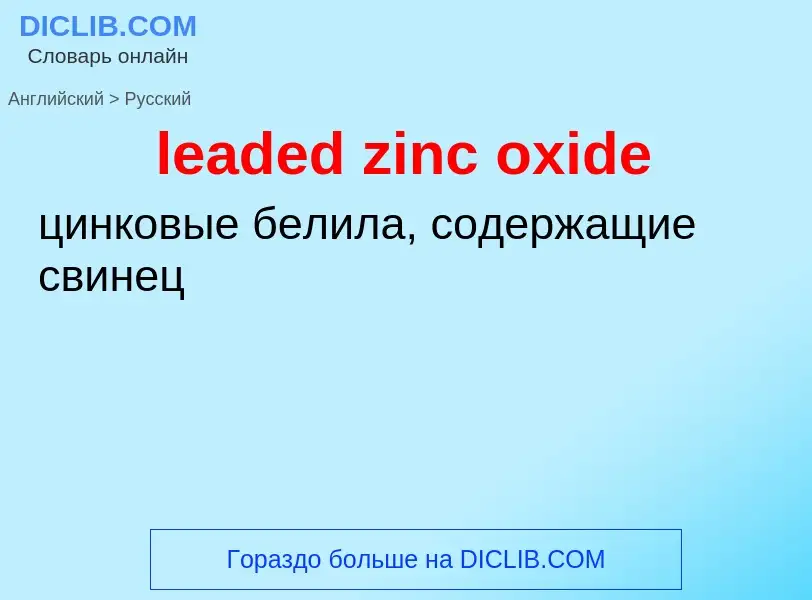Перевод и анализ слов искусственным интеллектом ChatGPT
На этой странице Вы можете получить подробный анализ слова или словосочетания, произведенный с помощью лучшей на сегодняшний день технологии искусственного интеллекта:
- как употребляется слово
- частота употребления
- используется оно чаще в устной или письменной речи
- варианты перевода слова
- примеры употребления (несколько фраз с переводом)
- этимология
leaded zinc oxide - перевод на русский
[ziŋk'ɔksaid]
общая лексика
окись цинка
цинковые белила
медицина
оксид цинка
[tʃaini:z'wait]
общая лексика
китайские белила (цинковые)
китайские белила
общая лексика
углецинковый
общая лексика
угольно-цинковая батарея
общая лексика
цинково-воздушный аккумулятор
['kild'spirits]
техника
отравленная соляная кислота (для пайки)
Определение
Википедия
Zinc oxide eugenol (ZOE) is a material created by the combination of zinc oxide and eugenol contained in oil of cloves. An acid-base reaction takes place with the formation of zinc eugenolate chelate. The reaction is catalysed by water and is accelerated by the presence of metal salts. ZOE can be used as a dental filling material or dental cement in dentistry. It is often used in dentistry when the decay is very deep or very close to the nerve or pulp chamber. Because the tissue inside the tooth, i.e. the pulp, reacts badly to the drilling stimulus (heat and vibration), it frequently becomes severely inflamed and precipitates a condition called acute or chronic pulpitis. This condition usually leads to severe chronic tooth sensitivity or actual toothache and can then only be treated with the removal of the nerve (pulp) called root canal therapy. For persons with a dry socket as a complication of tooth extraction, packing the dry socket with a eugenol-zinc oxide paste on iodoform gauze is effective for reducing acute pain. The placement of a ZOE "temporary" for a few to several days prior to the placement of the final filling can help to sedate the pulp. But, ZOE had in vitro cytotoxicity majorly due to release of Zn ions, not eugenol. In spite of severe in vitro cytotoxicity, ZOE showed relatively good biocompatibility in animal study when ZOE was applied on dentin. When ZOE was used as dentin-protective based materials, use of dental composite resin on ZOE was strongly prevented due to its inhibition of resin polymerization through radical scavenging effect. It is classified as an intermediate restorative material and has anaesthetic and antibacterial properties. The exact mechanism of anesthetic effect from ZOE was not revealed perfectly, but possibly through anti-inflammatory effect, modulating immune-cells to less inflamed status.
It is sometimes used in the management of dental caries as a "temporary filling". ZOE cements were introduced in the 1890s.
Zinc oxide eugenol is also used as an impression material during construction of complete dentures and is used in the mucostatic technique of taking impressions, usually in a special tray, (acrylic) produced after primary alginate impressions. However, ZOE is not usually used if the patient has large undercuts or tuberosities, whereby silicone impression materials would be better suited.
Zinc oxide eugenol is also used as an antimicrobial additive in paint.












.png?width=200)









